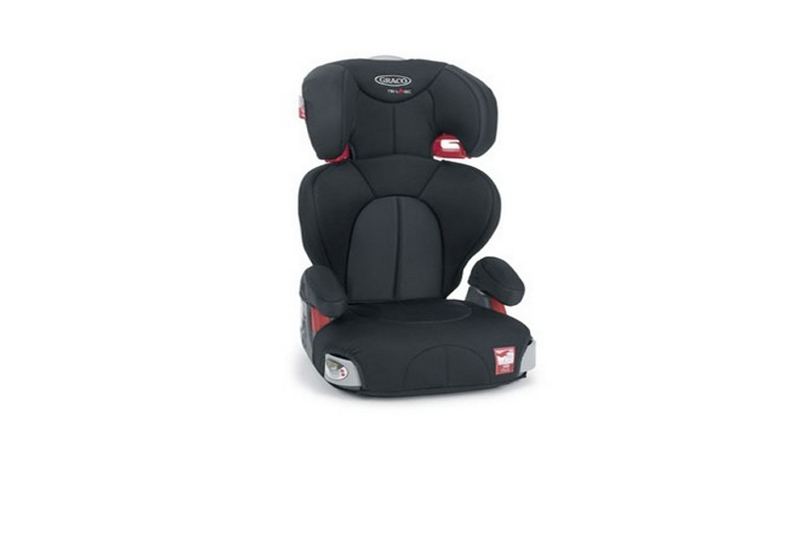You’ve got your booster seat, now how do you anchor it? In this blog post will discuss how to anchor a booster seat. It includes how to determine the appropriate height for an anchored booster seat, how to install the anchor and what type of anchors work best for your needs.

Anchoring A Booster Seat
Anchoring a booster seat properly is one of the most important things to do when using this convenient way to transport your child. To anchor, place the top tether strap around an appropriate anchor point in or on your vehicle and tighten until it’s snug across the bottom cushion of the booster.
The best places for older children are low anchors located near any seating position with three-point harnesses (these include all rear seats except the center).
Do Booster Seats Need To Be Anchored?
Booster seats need to be anchored if they are on a vehicle seat that is equipped with LATCH. Anchoring the booster will allow for more safety during an accident and protect your child from injuries.
Where Does The Seatbelt Go On A Booster Seat?
It is recommended to use a lap belt and shoulder belts with booster seats. The lower portion of the seatbelt should be placed on the hips or low across your thighs, not at your belly button level while the upper portion of the seatbelt should go across the center of the shoulder.
Can A Booster Seat Go In The Middle?
No, a booster seat should go in the backseat because it is safer for children that way. Also, a child can be ejected from a car if they sit between two adults or an adult and another child who are using their seat belts correctly during an accident. Children under age 13 must ride in the rear of a vehicle at all times too.
In some places, older kids may have to do so as well even though most states set minimum ages between eight and twelve years old before someone can stop sitting in the back with adults instead of riding up front by themselves safely buckled into the proper restraint system.
Where Should The Harness Straps Lie On An Infant?
An infant’s harness straps should lie on both shoulders and across the hips. If the child is in a rear-facing seat, they should be placed in such a way that their head does not rest against any part of the car.
The shoulder belt needs to go over one shoulder while resting low on top of their upper thigh with the buckle positioned below them at their crotch level.
How Do I Stop My Toddler From Flopping In His Car Seat?
The best way to make sure you don’t fall forward is the harness straps, which should be snug. Make sure your chest plate is at level with where they would have their armpits if standing up straight and then recline accordingly.
How Tight Should Carseat Base Be?
The car seat base should be tight enough that you cannot pinch the gap between the seat and car seat. If it is not, your baby will have more room to wiggle around which can decrease their safety in an accident.
How Do You Strap A Carseat Without A Base?
There are a couple of options for strapping in your car seat without the base. First, you can use a seat belt to strap down your child’s car seat.
The downside is that using this option requires more effort and may cause damage to the safety features on some models if not done correctly or with no slack remaining between where the child sits and the seatbelt.
Another option is to use a pool noodle cut-down or specially designed car seat strap covers that you can find at your local baby store, Walmart, Target, etc. These are very easy to install with no complicated instructions needed. Simply put them on around your front seat’s headrest post and your child’s car seat will be ready to go.
Can You Install A Car Seat With Just A Lap Belt?
You can, but it is dangerous and not recommended. A lap belt does not provide enough protection to the child in a car accident. Your safest bet is to install your child’s car seat with both a lap belt and shoulder harnesses for maximum safety.
What Is The Bar At The Bottom Of A Car Seat For?
That bar at the bottom of a car seat is there to help keep your child’s feet from crawling up and potentially becoming injured. The bar was added in response to complaints about injuries sustained by parents whose children crawled under their straps or into another part of the vehicle during an accident.
What Can You Do If Your Car Doesn’t Have ISOFIX?
Even if your car doesn’t have the Isofix system, you can still install a seat belt and use it as an installation method. The universal design of this type makes it easy to fit into any vehicle regardless of make or model.
Does The Maxi Cosi 2 Way Pearl Recline?
Yes, the Maxi Cosi Pearl is suitable for children from birth up to 12 months. When your baby falls asleep in the car seat you can recline it back together with its unique head support so that his or her neck and spine are perfectly supported.
You can easily switch between forward-facing mode (from around six months) and rearward facing mode (from birth).
What Age Is Maxi Cosi Pearl For?
Maxi Cosi Pearl is suitable for children aged birth to 18 months. Pearl is small, making it easy to use in most cars and taxis around the world.
